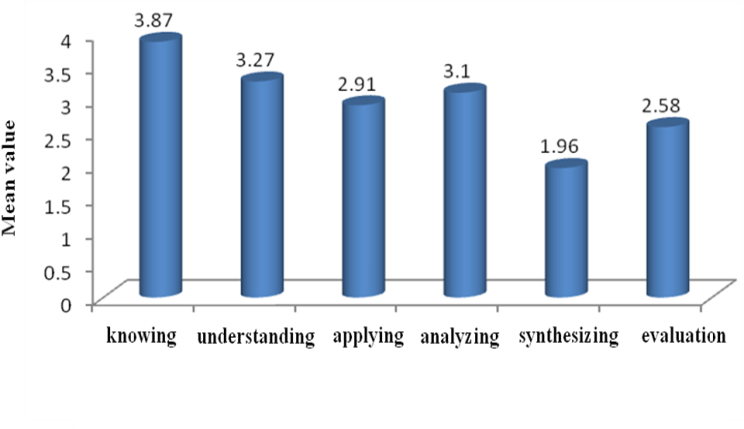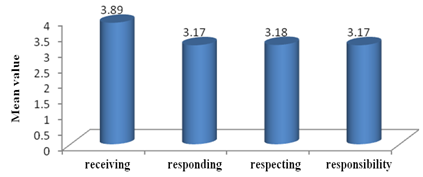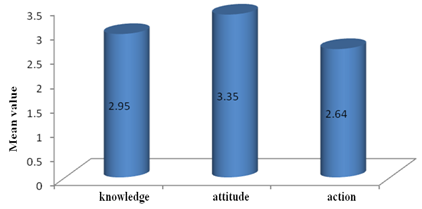-
Paper Information
- Paper Submission
-
Journal Information
- About This Journal
- Editorial Board
- Current Issue
- Archive
- Author Guidelines
- Contact Us
International Journal of Applied Psychology
p-ISSN: 2168-5010 e-ISSN: 2168-5029
2015; 5(4): 96-102
doi:10.5923/j.ijap.20150504.03
Knowledge, Attitude, and Action of Community towards Waste Management in River Bank of Martapura
Rahmaddin MY 1, 2, Taufik Hidayat 3, Bagyo Yanuwiadi 4, Suyadi 5
1Doctoral Program of Environmental Studies, Graduate Program, University of Brawijaya, Malang, Indonesia
2Public Relation of Banjar Regency, Indonesia
3Department of Agribusiness, Faculty of Agriculture, Lambung Mangkurat University, Banjarmasin, Indonesia
4Department of Biology, Faculty of Mathematics and Natural Sciences, University of Brawijaya, Malang, Indonesia
5Department of Livestock Product Technology, University of Brawijaya, Malang, Indonesia
Correspondence to: Suyadi , Department of Livestock Product Technology, University of Brawijaya, Malang, Indonesia.
| Email: |  |
Copyright © 2015 Scientific & Academic Publishing. All Rights Reserved.
The aim of this study was to assess the community’s knowledge, attitude, and action toward waste management. It is expected to be the basis consideration for Banjar Government to solve waste management problem in a more effective, efficient and environmental-friendly manner on Martapura River Bank. This study used quantitative descriptive analysis. Results of this study indicated that the community’s knowledge, attitude, and action on waste management at Martapura River Bank was in moderate level, with attitude as the main domain, followed by knowledge and action. Waste management problem along the river was very important to be investigated due to the waste problem which was caused by people’s behaviour who carelessly littering. People who lived at Martapura River Bank did not actively participate in handling and managing the river waste. Thus, community’s knowledge, attitude, and action need to be studied further to improve their awareness into better and responsible manner.
Keywords: Knowledge, Attitude, Action, Waste management, Household waste, Quantitative descriptive
Cite this paper: Rahmaddin MY , Taufik Hidayat , Bagyo Yanuwiadi , Suyadi , Knowledge, Attitude, and Action of Community towards Waste Management in River Bank of Martapura, International Journal of Applied Psychology, Vol. 5 No. 4, 2015, pp. 96-102. doi: 10.5923/j.ijap.20150504.03.
Article Outline
1. Introduction
- Waste problems are not new for Indonesian. Waste volume is increasing along with human population growth and limited available lands for landfill. These problems need to be solved immediately. The problems caused by the surround population which littering to Martapura River. The littering causes waste accumulation that lead to environment degradation and negative impact on community. In addition, pollution of air, soil, and water caused by waste become a source of various diseases to humans.In Banjar Regency, South Kalimantan, the waste volume has reached 1289.27 m3 per day in 2012. The solid waste which is transported to the final waste processing sites (TPS) in 2012 only 11.64%, while remaining waste is disposed into informal and unmanaged sites such as rivers, vacant land or roadside [1]. The waste volume in study area of Antasan Senor Ilir Village are: household waste 7.34 m3 per day, trading area 1.41 m3 per day, regional public facilities for 2.07 m3 per day and road for 1.23 m3 per day. If it is not properly handled, it will generate environmental problems.According to Government Regulation No. 81 of 2012 on the Management of Household and Household-like Waste, household waste defined as waste produced from household daily activities; but not include human faeces and specific waste. Types of waste produced in household scale are leftovers, papers, bottles, packaging waste, and plastic.Basically, the waste is disposal materials as uneconomically used products of human activities or natural processes; it even possesses negative economic value if it was wrong handled or removal and the process require high cost [2-5]. While, waste management is a step by step activity to generate another form of waste, that it is more useful and harmless for environment [6-8]. In this study, waste management activities include in household level are reduce the using of undecomposed materials, waste separating, removing waste to temporary landfill, waste reusing, and environment cleaning.One of the government efforts to solve and manage waste problem has been formulated in Law No. 18 of 2008 on Waste Management. In the act, there is an explanation concern waste management operation, consists of waste reducing and handling. Waste reduction activities include limitation of waste pilling up, waste recycling, and waste reusing. While waste handling activities may include waste separating and grouping according with the types, removing waste to temporary landfill and into final processing site.Waste management is not only the government responsibility. Communities and businessman, as waste producer, must also responsible for protecting and keep the environment clean and healthy. This means that there must be good cooperation between the government, businesses man, and communities in solving the waste problems. Therefore, the change in attitude, behaviour and ethics of civilized environment need to be managed properly. Behaviour is all activity that can be directly or indirectly observed. Behaviour is the response or reaction to stimulus from the outside [9-14]. Behaviour divided into three domains to simplify the measurement, i.e. knowledge, attitudes and actions [15-17].Waste management problem at the river banks need to be addressed so that we can know the community’s knowledge, attitudes and actions toward waste management during this time; because the waste increased along with population growth. Based on its geographical and historical conditions, Martapura River becomes the centre of city development, transportation interest, life supporting, life orientation and community identity [18]. Increasing population and urban growth are causing cultural degradation at settlements along the river and lead to environmental degradation. This study was aimed to assess the community’s knowledge, attitudes and actions towards waste management in Martapura River Bank. The results will become fundamental consideration for government of Banjar to solve waste management problem in a more effective, efficient and environmental friendly manner, especially in Martapura River Bank.
2. Research Method
- This study used quantitative approach with field observation and questionnaires method for data collection. The analysis was carried out using quantitative descriptive method. This descriptive analysis was aimed to obtain information about the knowledge, attitudes and actions at Martapura River Bank communities concerning the waste management practice.
2.1. Study Site Selection
- The selection of location in this study is criterion based method. The selection was based on certain criteria in line with the research background and certain events to achieve completeness of the information [19]. Study area located at Martapura River Banks in Antasan Senor Ilir Village, Sub-district of East Martapura. This location selected based on some considerations: (1) the absence of waste management services from government and non-government organization; (2) poor (dirty) environment; (3) no water service (PDAM); (4) people’s habit of littering to Martapura River; (5) there was no road for four wheels vehicles, and (6) toilet activities still dump into the river.
 | Figure 1. Location of Study (Source: Bapedda Banjar) |
2.2. Data Collection
- Data collection was carried out using questionnaire for household respondents in area around Martapura River. According to Solimun [20], number of samples was equal to five until ten time’s number of indicator variable from the total of latent variables. In this study, we used 33 indicators thus the sample size was 5 x 33 = 165 respondents. However, to avoid data error, researcher added ten respondents to 175 persons. Thus, in this study we used 175 respondents as the subjects to represent households in area along the Martapura River. But, after sampling or collected data, there were two data of respondents which could not be used due to coding error. Finally, the total respondents were used in this study was 173.
2.3. Data Analysis
- This study used quantitative descriptive analysis. The analysis was descriptively provided an overview on field data by interpretation of primary data into tabulation. This descriptive analysis aimed to get overview of variables studied, i.e. knowledge, attitude and actions in frequency and percentage form. It is also to get general overview on the characteristics of respondents [21]. Variable description, as a part of descriptive statistical analysis, was to determined the frequency distribution, which deeply described knowledge (X1), attitude (X2), and action (X3) variables. The frequency distribution obtained from tabulation of respondents scores.Data in this study used semantic differential scale with produced score 1 to 5. Then, intervals scale was made to categorized the mean of respondents answer. This interval scale was calculated from the highest score minus the lowest score then divided by 5, resulted interval for the category of 0.80, thus the categories of respondent answers were determined based on the following scale in Table 1.
|
3. Results and Discussion
3.1. Community’s Knowledge
- Knowledge variable consisted of knowing, understanding, applying, analysing, synthesizing, and evaluating indicators. Knowing defined as recalling a subject material that has been taught previously. While Understanding defined as ability to correctly explain about a known object and well interpreted the subject material. Applying was defined as ability to use the learned subject material on real circumstances. Whereas Analysis is the ability to describe subject material or objects into components, but remain as a structured organization and related to the others. Synthesizing showed the ability to put or linked parts into a whole new form. Evaluation related to the ability to justify or assessment on a subject material or objects [32]. The description results of knowledge variable analysis were presented in Figure 2.
 | Figure 2. People knowledge on waste management in Maratapura River Banks |
3.2. Community’s Attitude
- In an effort making people to know and aware toward the importance of waste management, the key factor was making them and community understand the problem. If the people had understood the problems, then they need to be given information about waste management at Martapura River Bank. Variables of attitude consisted of some indicators include receiving, responding, respecting and responsibility. Results of attitude variable analysis were presented in Fig.3.
 | Figure 3. People knowledge on waste management in Maratapura River Banks |
3.3. Community’s Action
- Action variables consisted of awareness, interest, evaluation, try and accept indicators. Results of action variables analysis were showed in Figure 4.
 | Figure 4. Community action toward waste management practice in Martapura River Bank |
3.4. Community’s Behaviour
- Community’s behaviour toward waste management at Martapura River Bank was also in moderate level with attitude as the highest variable and followed by knowledge, and action, respectively. Results of community’s behaviour analysis were presented in Figure 5.
 | Figure 5. Community’s behaviour toward waste management practice in Martapura River Bank |
4. Conclusions
- Community’s knowledge, attitude, and action toward waste management practice at the Martapura River Bank was at moderate level; with attitude as the main behavior indicator, followed by action. This study proved Theory of Planned Behaviour that used to predict whether a person would perform or not perform behaviour. Knowledge, attitudes and actions affected community’s behaviour on waste management. Thus, in this study provided an overview if the Banjar government want to change the community’s behavior toward waste management so they should make serious effort in improving knowledge and awareness about waste management. It would able to change people’s attitude to be positive and also realized in positive action.
ACKNOWLEDGEMENTS
- The author would like to thank: The Government of Banjar; Rural Community of Antasan Senor Ilir; East Martapura, Banjar; UB rector; the Director of the Graduate Program UB; and the Rector of Lambung Mangkurat University.
 Abstract
Abstract Reference
Reference Full-Text PDF
Full-Text PDF Full-text HTML
Full-text HTML